Aardman created the characters using household stains as color.
The post Aardman Sells Persil Laundry Detergent With A Short, ‘Monster Stains’ appeared first on Cartoon Brew.
Add a Comment
Aardman created the characters using household stains as color.
The post Aardman Sells Persil Laundry Detergent With A Short, ‘Monster Stains’ appeared first on Cartoon Brew.
Add a Comment
As quickly as it began, FMX is over for another year. Perhaps more than at previous conferences, speakers were especially confident in discussing the current state of the animation, vfx, and digital content creation industries – including the state of virtual reality. Just as importantly, there was much discussion of the future, especially with the clear arrival of vr and interactive and immersive storytelling. Just what should filmmakers do with this new medium? Luckily, pretty much the world’s top vr filmmakers were there to weigh in.
VR capture tools, techniques for producing content, and headsets for displaying that content seem to be innovated upon almost weekly. We still don’t know quite yet what many of the virtual reality and augmented reality tech companies have in store for us (think: Magic Leap). But there are, of course, already many ways to experience vr and several studios have dived into vr content creation. The question is, how do you make that content compelling?
At FMX, an expert panel of vr and immersive filmmakers hosted by Google Spotlight Stories’ Kim Adams was on hand to discuss their relatively short but intense experiences in the field. One of those panelists was Jan Pinkava of Pixar fame (Geri’s Game, Ratatouille). Now creative director at Spotlight Stories (part of Google ATAP), Pinkava created an early interactive film for mobile devices in 2013 with Windy Day, while ATAP was still part of Motorola.
Pinkava’s film grew out of a mission at ATAP to create something emotional for the smartphone; the group recruited Pinkava, who brought aboard other Pixar veterans like Doug Sweetland and Mark Oftedal. “We wanted to do something with this power, something emotional,” Pinkava told a packed FMX audience. “Coming from Pixar, those films they make are emotional – so we thought, let’s make movies. We sat in a room and said, why don’t we make a movie and give the camera to the audience?”
After overseeing other films crafted in Google’s ongoing Spotlight series, Pinkava has formed his own views about what works in immersive and interactive films, whether they be 360 degree experiences or vr pieces that can be watched with either simple goggles or hard-wired headsets. Pinkava constantly asks, when considering vr proposals, ‘Is this the best way to watch this? Is every way I’m going to watch this a good way? As a director, how can you help that experience for the audience be a good one?’
Two other filmmakers on the panel with experience in Google Spotlight Stories were Tim Ruffle and Jason Fletcher-Bartholomew from Aardman Animations. They collaborated on the 360-degree Special Delivery. Writing Special Delivery required a re-think of the traditional short film script. “In our heads we initially wrote a linear script,” said Fletcher-Bartholomew. “We would write in background gags, but we should have concentrated on the main chase. So getting out of that linear mindset was actually quite hard for a number of weeks. Even our storyboard was very linear, but in end we cut it up on different walls. If anyone looked at it they would have thought we were mad. We went back to cardboard cutouts and moving back to theater-like sets.”
Another challenge faced on this Aardman short, the duo shared, was how to lead the viewer around in the story and not have them get lost in the 360 world. “I found it more like choreographing a play than writing a play,” said Ruffle. “We made sure there were elements of our sets that made particular characters visible. It’s a bit like video game language. People just seem to understand to look in certain directions because something is happening over ‘there.’”
This requirement to consider new ways of choreographing the action in an immersive film was a view also shared by Nexus’ co-founder and executive creative director Chris O’Reilly. Nexus is making a new Google Spotlight Story called Rain or Shine (some clips were shown here at FMX). “Directors come in with filmmaking tools, but they all need re-thinking in vr,” said O’Reilly. “We were thinking about how to control spaces. We talked to games companies. We even talked to architects who have experience in cajoling people through airports.”
Aardman and Nexus’ experience also highlights one important aspect of vr right now: it’s new. Which means everyone is experimenting. Jacquie Barnbrook, a producer with The VR Company, which is in the process of making the much-anticipated The Martian VR experience, says part of the joy and frustration of vr filmmaking right now is just getting through it. “The director of The Martian VR, Robert Stromberg, says we’re building the plane as we’re flying it – we may die,” Barnbrook related. “Shooting in vr is the most weird and awkward experience you can imagine. Things like our cameras are not yet able to sustain shooting for more than six minutes. We were putting cups of ice on the cameras to cool them down!”
For Mirada Studios’ Andy Cochrane, who has worked on everything from a Google Shop VR Tour to The Strain VR, the result of this new wave of interactive filmmaking actually provides the opportunity to serve in multiple roles. “I’m a technical supervisor, a director, a visual effects supervisor. We settled on ‘digital and interactive director’ because it seemed to be descriptive of something.”
And Cochrane suggests that this new vr/interactive storytelling world – which is heavily concentrated right now on the west coast of the U.S – just happens to come at a time when the visual effects industry on that side of the country has been partially decimated by subsidies and other benefits being offered elsewhere. That, says Cochrane, represents an opportunity to visual effects artists who once worked in Los Angeles and are highly suited to technical and artistic aspects of virtual reality. Indeed, effects artists have for years been dealing with stitching plates, making 3D scenes and characters, and solving complex lighting issues, in helping to tell compelling stories.
The future does look bright in vr and immersive and interactive entertainment, even if we don’t quite know just what it ‘is’ yet. Certainly, vr content providers are doing everything they can to, as Jan Pinkava observes, “put tools out there for their collaborators — filmmakers — to make the things they know how to do. The whole purpose is then to make all this available to you, the audience.”
The post FMX Report #2: What The VR Future Holds appeared first on Cartoon Brew.
Add a CommentAardman's low-budget, big-picture animation continues to compete in our blockbuster marketplace, with stop-motion animation more real than hyperreal CGI.
Add a CommentAardman's adaptation of "Shaun the Sheep" is a critically acclaimed wonder. Will American audiences appreciate it?
Add a CommentHow many Americans even know 'Shaun the Sheep' has a feature film coming out in less than a month?
Add a CommentGoogle's interactive film division has announced four new animation projects, and introduced a developer's kit that allows anyone to produce interactive animation.
Add a CommentThe stop-motion director takes on his first feature film since 'Wallace & Gromit: The Curse of the Were-Rabbit'.
Add a CommentThe forty-three-year-old British animation studio is being honored with a major exhibit in Paris.
Add a CommentAardman's first star, Morph, has returned in a new series of Kickstarter-backed YouTube shorts.
Add a CommentJust when you thought Netflix was gobbling up all of the high quality kids programming, Amazon Prime Instant Video announces a licensing agreement with Aardman Animations for online streaming in the United States.
Add a CommentDolphin Burger Studios, a workshop for disabled artists and animators in Brighton, England, has produced a fan-remake of the memorable stop-motion music video for Peter Gabriel's “Sledgehammer.”
Add a CommentStarting out as a side character in the Wallace and Gromit short "A Close Shave" (1995), Shaun the Sheep became an unlikely franchise star. After getting his own line of merchandise and a spin-off television series (which was popular enough to spawn its own spin-off, "Timmy Time") Shaun is set to become the subject of Aardman’s next feature in spring 2015. The film currently doesn't appear to have a U.S. distributor.
Add a Comment
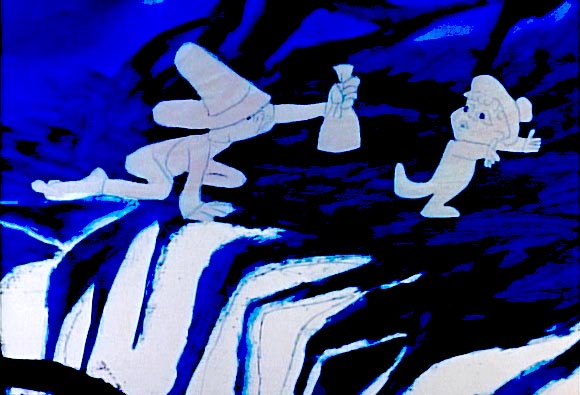
One of the better-known shorts made by John and Faith Hubley is Moonbird, from 1959. This film came about when the Hubleys made a secret recording of their two sons one night, playing a game in which they pretended to be hunting for the elusive Moonbird. The result was a soundtrack with a complete narrative, courtesy of the two children; the Hubleys and their studio then visualised the story to create the film.
It is surprising how well Moonbird works, considering that its story is simply two kids making things up as they go along. The personalities of the children come through very strongly and much of the recorded dialogue is inherently funny, as when the younger boy tries to recite “Hey Diddle Diddle” but has trouble remembering past the second word.

Moonbird was followed by the 1967 film Windy Day, based on the same concept but using the voices of the Hubleys’ two daughters. This short is much looser, with a transformative element as the two characters morph from one identity to another. Instead of a single narrative, the children deliver a free-flowing conversation which makes several twists: The two girls start by playing at being a knight and a princess, and later play at being animals; between these sessions they discuss birth, adulthood, marriage and death in the half-grasped manner of children.
Windy Day was shown at the 1968 Cambridge Animation Festival; amongst the people who saw it were producer Colin Thomas and animator William Mather.
“We were blown away by the use of raw unpolished sound with a highly controlled medium like animation”, said Mather in an interview I conducted with him in 2011. In 1975 the two put together a pilot film entitled Audition, based around a recording of Mather’s son talking to an organ player as he auditioned for the role of a choirboy.
The film is very different to Hubley’s shorts. Aside from a very brief sequence in which the boy imagines the organ turning into a monster, it does not take place in a world of childhood fantasy: Its aim is instead to recreate the conversation in more straightforward cartoon terms.
The Hubleys sought to create fantasy films when they made Moonbird and Windy Day, and turned to the taproot of so much fantasy: the imaginations of children. By contrast, Mather and Thomas created a film which was closer to documentary. It is worth noting that Thomas was a documentary filmmaker, and that BBC Bristol – the branch for which the two men made their pilot – has a strong documentary tradition.

The pilot led to Animated Conversations, a six-part series produced in the late-1970s by various directors. Mather contributed Hangovers, based on a recording of a barmaid and her customers, but the best-known shorts for this series were made by Aardman founders Peter Lord and David Sproxton.
The two Aardman shorts take quite different approaches. Down and Out is a literalistic portrayal of an elderly man being turned away from a hostel which – unlike Mather’s shorts – lacks any humor; its emphasis is instead on pathos. Confessions of a Foyer Girl, on the other hand, plays its material for laughs. A young cinema employee discussing the banal details of her day-to-day life is contrasted with the glamorous and exciting world of the movies.
Lord and Sproxton’s work on Animated Conversations prompted Channel 4 to commission its own series of animation based on natural dialogue, this time made entirely by Aardman: Late Edition, Sales Pitch, On Probation, Early Bird
and Palmy Day. As before, some of these went for wacky comedy, while others opted for melancholy tones.
Aardman’s subsequent work in this format includes Creature Comforts by Nick Park. As well as ranking as the single most famous example of the approach, it is one of the more playful in using its soundtrack. As the film is framed as a series of short interviews with various characters, Park was able to home in on the soundbites with the most comic potential. The earlier shorts built themselves around large chunks of undigested conversation, but the whole point of Creature Comforts is that the interviewees are quoted completely out of context.
Creature Comforts became an entire franchise, and in is now the key example of what is, today, a full-fledged genre of animation.
Sometimes the approach can serve a practical use. Animation students are often assigned the task of working to found soundtracks as lipsync exercises. “The Trouble with Love and Sex,” a 2011 episode of the BBC documentary series Wonderland, focused on people undergoing counselling; when it ran into the problem that these people were not comfortable being filmed, it simply used their voices, the visuals being animated by Jonathan Hodgson.
Meanwhile, other animators returned to the daring ethos of the Hubley shorts. Chris Landreth’s Ryan plays with intertextuality, using animation to illustrate interviews with and about animator Ryan Larkin. Sylvie Bringas and Orly Yadin’s’s Silence presents a child’s eye view of the Holocaust, alternating between harsh, woodblock-like sequences for the camp scenes and a softer, more childlike style for the postwar sequences.

There are three general approaches taken by these films. The first is a literalistic portrayal of the conversation, as with the melancholy Down and Out, the lighthearted Late Edition and the harrowing Waltz with Bashir (the last of these being the only feature-length animation of this type that I am aware of.) The second approach creates comedy by placing ordinary dialogue into an unusual situation, as with Creature Comforts.
Finally, the third approach uses animation to illustrate the more subjective aspects of the soundtrack, usually by attempting to recreate the mental state of the speaker. Examples include Silence, Ryan, Marjut Rimminen’s Some Protection, Paul Vester’s Abductees and Andy Glynne’s Animated Minds.
Jan Svankmajer once remarked that “animators tend to construct a closed world for themselves, like pigeon fanciers or rabbit breeders.” When an animated film uses unscripted audio, what we see is pure fantasy, but what we hear is an actual moment in time—the closed world of animation is suddenly opened up to stark reality.
IMAGES AND VIDEO IN THIS PIECE
1.) Still from Moonbird
2.) Still from Windy Day
3.) Audition
4.) Still from Confessions of a Foyer Girl
5.) Still from Creature Comforts
6.) Clip from “The Trouble with Love and Sex”
7.) Still from Waltz with Bashir
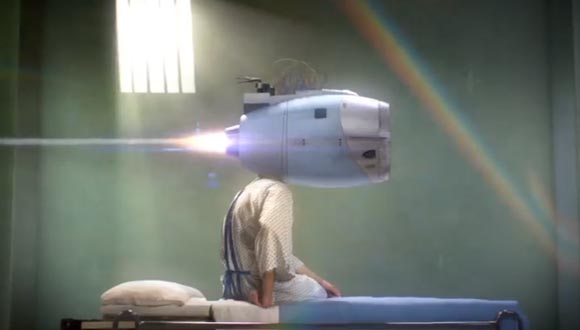
Director Darren Dubicki of Aardman Animations created this strikingly elegant mixed-media piece to celebrate Pink Floyd’s legendary album The Dark Side of the Moon.
The three-minute piece serves as a trailer/supplement to an original radio drama based on the album, written by playwright Sir Tom Stoppard, premiering on BBC Radio 2 on August 26th. Dubicki also created an extended film loop that will complement the audio experience online.
More details about the production from the official Aardman release:
Aardman director, Darren Dubicki saw the piece working as a film trailer and the team spent time absorbing the rich detail from both Pink Floyd’s music and Sir Tom Stoppard’s play. In doing so they developed a striking visual concept where images juxtapose with carefully considered lyrics and dialogue from the play encompassing the underlying themes of greed, conflict, consumption, humanity and the descent into madness…
Dubicki says, “What was fundamentally important to us was that we retained a consistent visual tone that echoed the imagery created over the years for the band. The intensely surreal and powerful artwork created by Storm Thorgerson and Hipgnosis has always had a strong distortion on reality. Their sense of space and twisted context make for some uncomfortably beautiful art. This tone has been consistent for decades and we wanted to honor this with our contemporary digital (and analogue) slant on the style.”
Created using a collage of digital imaging, CGI, studio-based effects and hand crafted elements the films were produced with depth and richness that reflects the classic tone of Pink Floyd’s art.
CREDITS
Client/Agency: BBC Radio 2
Producers: Rhian Roberts/ Rowan Collinson
Aardman Animations
Director: Darren Dubicki
Executive Producer: Heather Wright
Producer: Helen Argo
Production Assistant: Danny Gallagher
Production Co-ordinator: Louise Johnson
DOP: Mark Chamberlain
Camera Assistant: Joe Maxwell
Gaffer: Nat Sale
CG Modeling: Olly Skillman-Wilson
CG Modeling: David Klein
CG Modeling: Saul Freed
CG Animation: Mathew Rees
CG Animation: Rich Spence
CG Lighter: Andrew Lavery
Supervising Senior Compositor: Jim Lewis
Compositor: Spencer Cross
Compositor: Paule Quinton
After Effects Artist: Tom Readdy
Editor: Dan Hembury
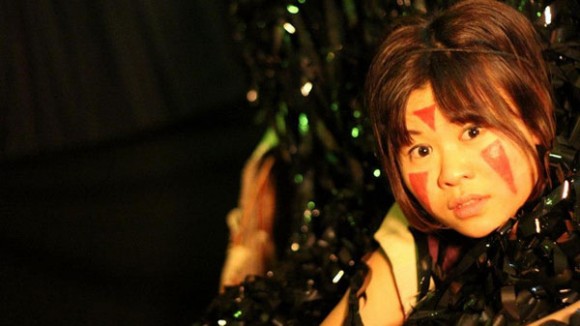
After a successful UK premiere and a short run in Tokyo, Whole Hog Theatre’s stage version of Hayao Miyazaki’s Princess Mononoke will return to London’s New Diorama Theatre next month due to “unprecedented demand.” The production is a collaboration between the British theatre troupe and Miyazaki’s Studio Ghibli and features large scale puppetry and a recreation of Joe Hisaishi’s original film score.
Miyazaki, who is known for refusing the re-versioning of his films into theatrical productions, approved the project after being presented with a video proposal from Whole Hog by way of Aardman’s Nick Park. As recalled by Studio Ghibli producer, Toshio Suzuki, he gave his consent “a couple of seconds” into viewing the presentation. Suzuki was equally impressed: “I wanted to watch a strange ‘Princess Mononoke’, he told the Wall Street Journal.
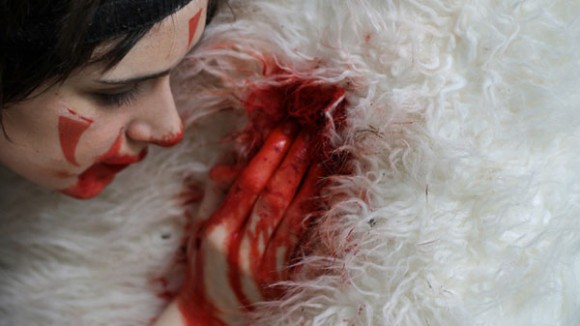
With puppets by Charlie Hoare and costumes by Yoseph Hammad, the show translates the film’s eco-friendly theme and inherent Asian aesthetic by use of reclaimed materials and a form of Japanese textile work called Boro, which involves the patch-working of rags into garments.
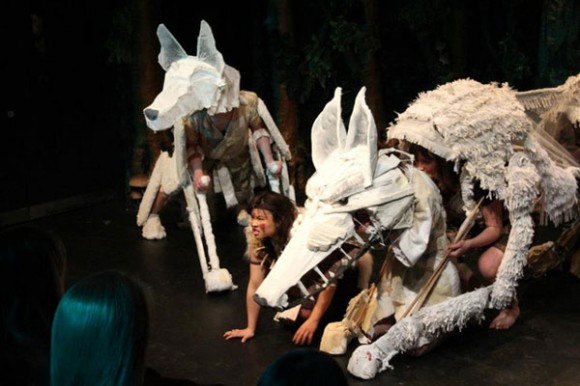
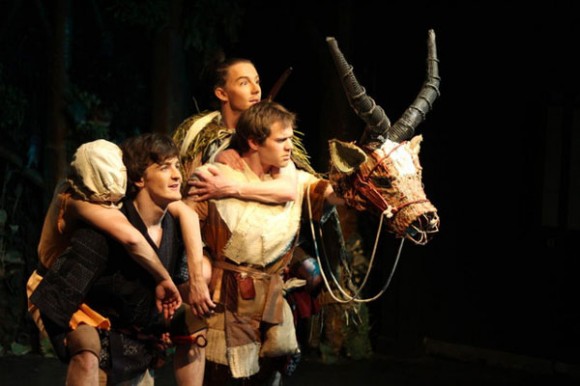
“Being a big Studio Ghibli and Miyazaki fan myself, I have no desire to alter the film’s narrative and atmosphere, or to add a ‘new spin’ on the story. I only want to re-tell it in a different form,” director Alexandra Rutter told Film-book.com. “However, whilst audiences can expect to see much of the film’s narrative happen onstage, they should also expect the techniques we use to tell the story to be quite different.” And her artistic objective has paid off as the production has been picking up positive word of mouth, selling out entire runs and was even featured as one of Lyn Gardner’s theater picks in The Guardian.
The second UK run of Whole Hog Theatre’s Princess Mononoke is scheduled for June 18th-29th at the New Diorama Theatre in London. The cast is led by Mei Mac as San/Princess Mononoke and Maximillian Troy Tyler as Prince Ashitaka. The production also features musical direction by Kerrin Tatman and design by Polly Clare Boon.
Add a Comment
Last year Michael Schlingmann found himself designing and animating all the 2D sequences for Aardman/Sony’s The Pirates: Band of Misfits. I wish the whole sequence was online – it’s a real highlight in an already outstanding film – but for now, check Schlingmann’s Doodlepirates blog, illustrated in-depth with words, art and video (like the piece below) detailing his thoughts and process.
Add a Comment
Even if you don’t care about football shoes, this Nike commercial provides good entertainment value. Montreal-based filmmaker Patrick Boivin (of Iron Man vs. Bruce Lee fame) directed the stop motion spot starring a marionette version of footballer Andrés Iniesta. Aardman produced the animation, South Korea’s Coolrain created the figures, and Wieden+Kennedy (London) was the agency.
(Thanks, @eee)
Cartoon Brew |
Permalink |
No comment |
Post tags: Aardman Animations, Coolrain, Nike, Patrick Boivin, Wieden+Kennedy
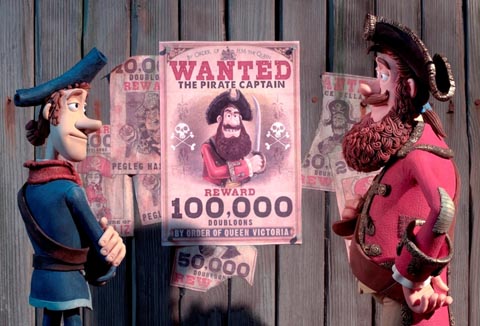
Aardman’s latest feature The Pirates! Band of Misfits, directed by Peter Lord, debuted in second place in the US with an estimated $11.4 million. It’s Aardman’s weakest opening ever in the US. However, it was considered on a par with studio projections, and the film should end up with a respectable run, especially considering that no other animated films are set to be released in May.
For comparison, here’s how other Aardman features have opened in the US:
Chicken Run (2000): $17.5 million
Wallace and Gromit: The Curse of the Were-Rabbit (2005): $16 million
Flushed Away (2006): $18.8 million
Arthur Christmas (2011): $12.1 million
Cartoon Brew |
Permalink |
2 comments |
Post tags: aardman, Aardman Animations, Th Pirates! Band of Misfits
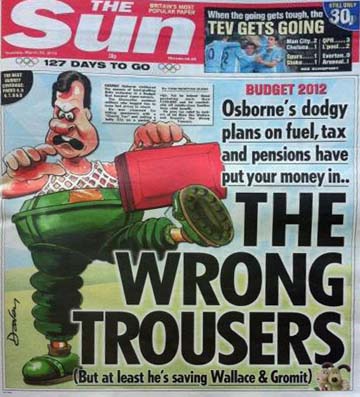
Discussions of government tax subsidies tend to be fairly dry affairs, unless they involve Wallace and Gromit:
Aardman Animations, the studio behind Wallace and Gromit, Arthur Christmas and the upcoming The Pirates! Band of Misfits, had earlier threatened to leave the UK if it did not receive a tax break for TV productions. It would follow in the footsteps of other UK TV producers who had already left the country, including Bob the Builder (now produced in the US), Thomas the Tank Engine in Canada and Noddy in Ireland. The new corporate tax relief scheme announced this week will benefit UK-based TV animation studios as well as video game production companies. You can read more about what this means at the Guardian website.
Cartoon Brew |
Permalink |
2 comments |
Post tags: Aardman Animations, UK
This is lookin’ real good to me… better and better with every trailer:
Cartoon Brew: Leading the Animation Conversation |
Permalink |
No comment |
Post tags: Aardman Animations, The Pirates
Gulp is a short stop-mo animation created by “Sumo Science” (Ed Patterson and Will Studd) for client Aardman Animations. The film has broken a world record for the “largest stop-motion animation set”, with the largest scene stretching over 11,000 square feet. It was shot frame-by-frame on location on a beach in South Wales, using the camera on a Nokia N8 smart phone. But even more inspiring than the film itself (embed below) is the making-of video (click here).
(Thanks, Craig Yoe and Simon Acosta)
Cartoon Brew: Leading the Animation Conversation |
Permalink |
No comment |
Post tags: Aardman Animations